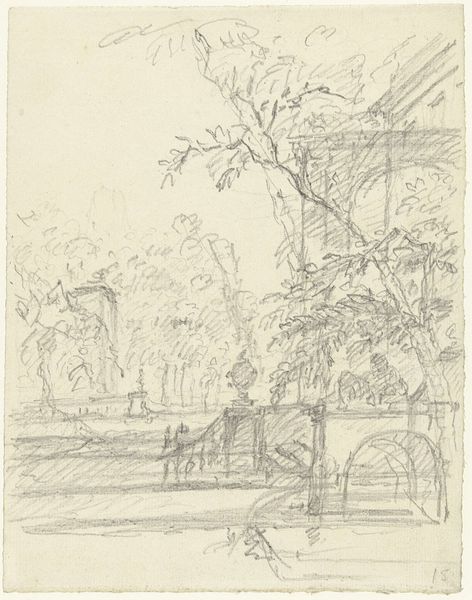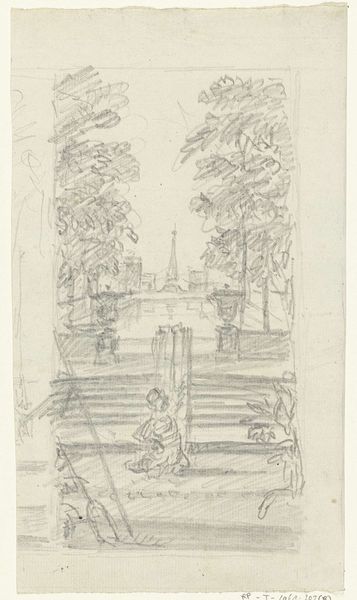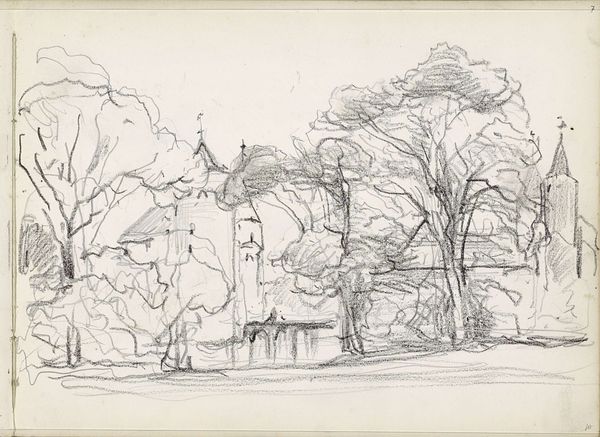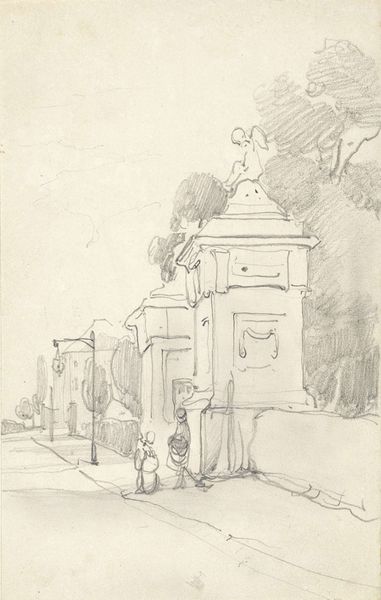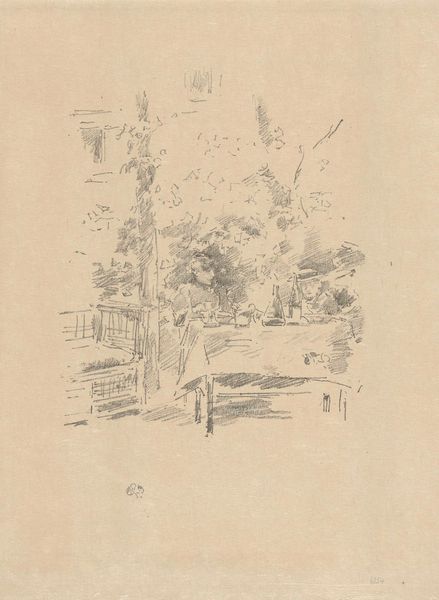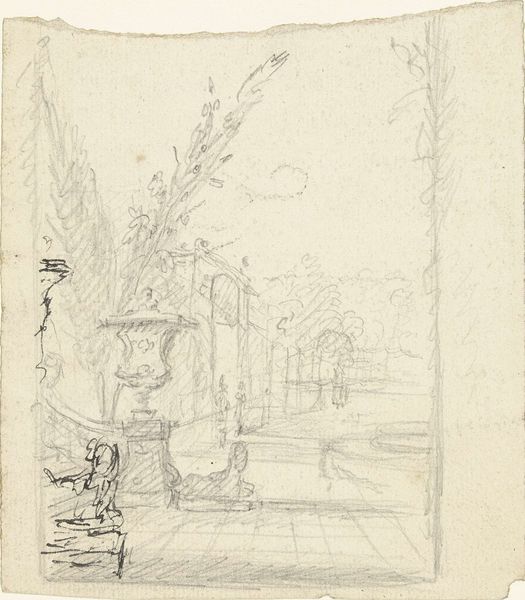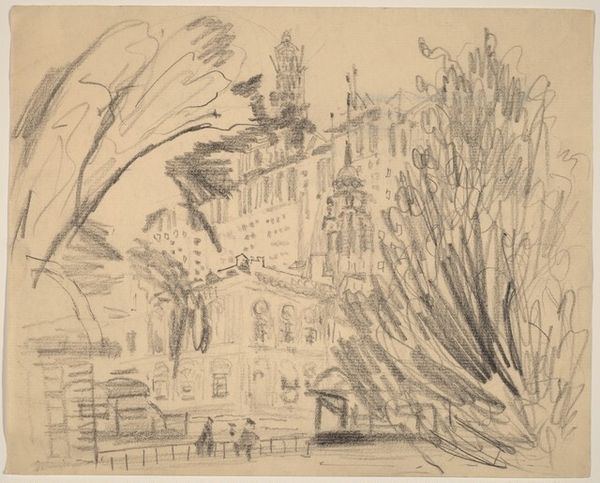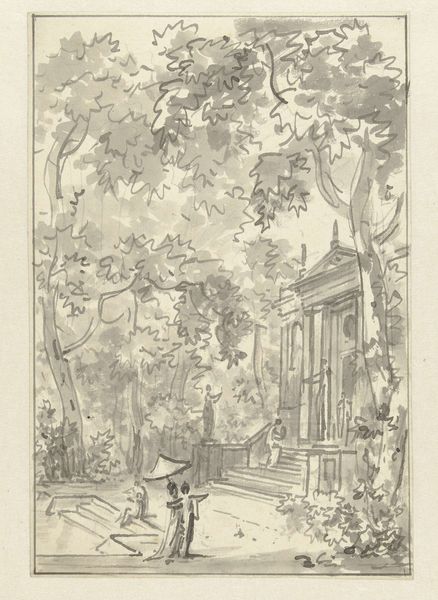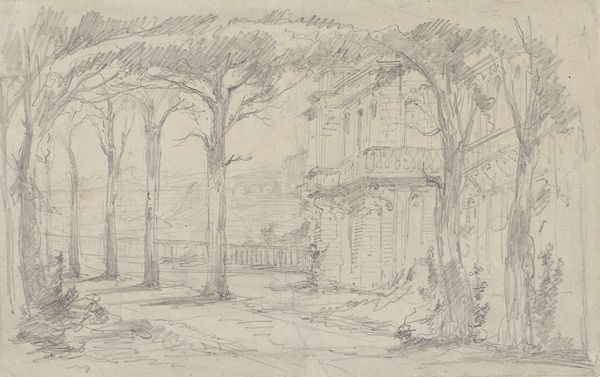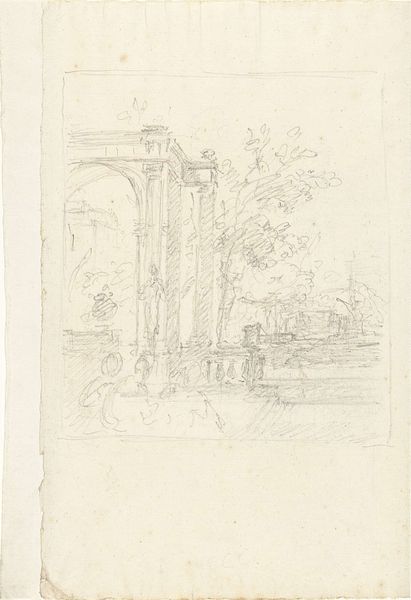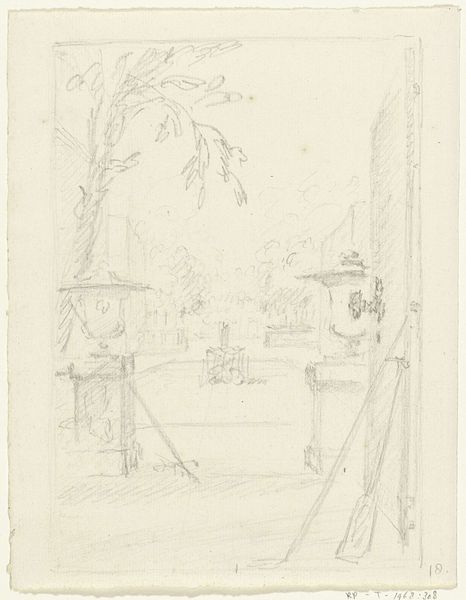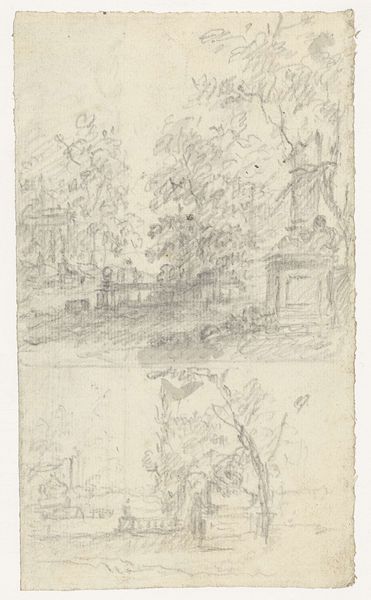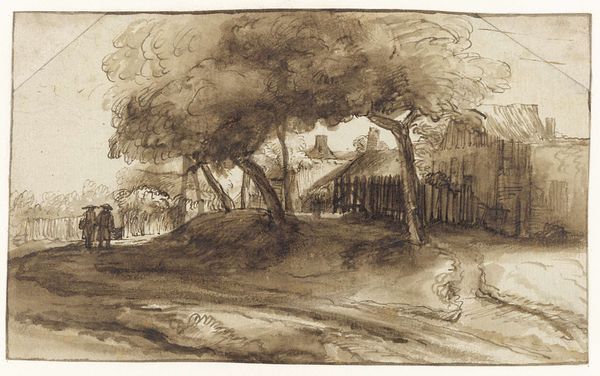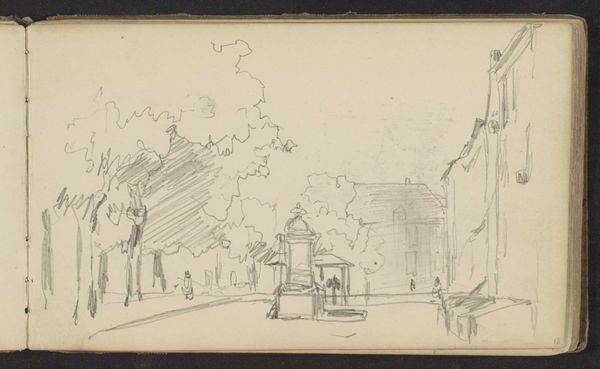
drawing, ink
#
drawing
#
landscape
#
classical-realism
#
ink
Dimensions: height 212 mm, width 167 mm
Copyright: Rijks Museum: Open Domain
Curator: This landscape before us, titled "Tuingezicht met vijver en balustrade," is an ink drawing dating back to the period between 1715 and 1798, created by Dionys van Nijmegen. Editor: Ah, it's like stumbling upon a secret garden in someone’s sketchbook! There’s a delicate dreaminess to the scene, almost as if I’m viewing a half-remembered summer afternoon. Curator: Indeed, the sketch captures the spirit of classical realism with its idealized landscape and meticulously rendered architectural elements. The balustrade, in particular, becomes a symbolic barrier, suggesting a curated, civilized space removed from the wilder aspects of nature. What I find compelling is how garden architecture traditionally embodies social hierarchy, acting as a stage where visibility and seclusion play key roles. Editor: I totally see that. The structure and shadows evoke a sense of poised observation. Almost like we’re hidden, peering from the shadows. The flowing ink suggests this world lives as much in the artist's mind as in reality. The artist teases this controlled world through shadow, shape, and incomplete structure. What could lurk there? Curator: Shadow carries significance here. Notice how van Nijmegen employs it not merely to model forms, but to subtly obscure and reveal. Shaded elements encourage a meditative interpretation; each carefully drawn form is charged with possible meanings. What’s amazing here is that in art-historical context, idealized nature has a direct link with idealized concepts of order. Editor: I like the word 'order.' Something feels deliberately casual and slightly unfinished, resisting over-idealization. Despite being black and white and feeling like something sketched, the composition offers complexity. In particular the tree branches feel as alive and free as I think they should be! Curator: That speaks to the power of preliminary sketches! Ultimately the work achieves an understated timelessness, where elements like the balustrade and pond invite interpretation about what civilization is. Editor: You are absolutely right. This tour made me wish I could stroll in Nijmegen’s world, observing all that balances structure with spontaneity. What are you taking from our viewing? Curator: Well, for me, understanding van Nijmegen is understanding a commitment to continuity—how classical forms find relevance over time and become encoded into collective cultural consciousness.
Comments
No comments
Be the first to comment and join the conversation on the ultimate creative platform.
